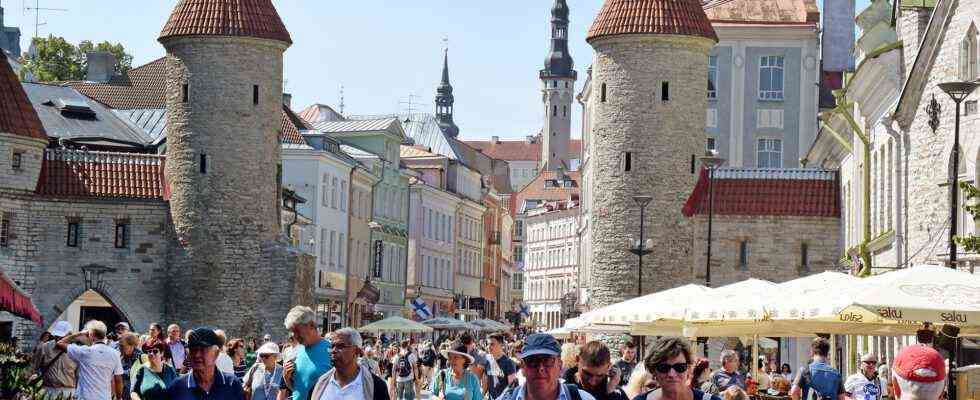Status: 02.11.2021 8:23 a.m.
A pension reform by the Estonian government allowed some of the money to be withdrawn to be invested elsewhere. 1.3 billion euros deducted. Experts are now warning of poverty in old age.
Vladimir Frank is a street musician in Tallinn – and he really sounds like he’s got a lot of anger in his stomach. He’s in trouble with his pension. “I don’t take any risks and don’t buy stocks. I don’t know my way around that. You shouldn’t do what you don’t understand,” he says. “Otherwise you lose everything in the end.”
What he does with his money instead – or whether, contrary to the trend, he might even end up leaving it where it is, with a bank, and thus in the second of three pillars of the Estonian pension system: he won’t reveal that. Pillar one is the normal state pension. Pillar three is a purely private supplementary insurance.
Personal responsibility for old-age provision
Other people in Tallinn are less secretive about this. Henn Liiva now belongs to 20 percent of the people in Estonia who no longer trust the part of the pension, which is mostly managed and funded by Swedish banks. Since a highly controversial pension reform – against which critics had unsuccessfully sued the Supreme Court – this second pillar is no longer mandatory. If you want, you can withdraw the accumulated capital and invest it better on your own responsibility. Or so it was meant to be.
But Henn neither trusts banks nor markets and has not chosen any stocks. “I have a big house and put the money into solar panels,” he says. This makes Henn one of the more sensible ones. At least he increases the value of his property, while others are only now buying houses or apartments.
1.3 billion for travel and cars
Demand has skyrocketed since the payouts began in September. But this also applies to investments whose value is less stable: expensive cars, vacation trips. Around 1.3 billion euros have so far been taken out of the pot – or “plundered”, as the conservative politician Helir-Valdor Seeder complains.
He actually supported the reform and complained a lot about the banks. They were not in any real competition and therefore far too passive. But he doesn’t think what’s happening right now either. “There are people who neither invest their money nor handle it responsibly. They spend it on travel or drink it,” he says.
Fear of old-age poverty
Just like in the past, it was still about “our grandma, her little house”: In Estonia today it is the second pillar of the pension system, which has been getting thinner and shorter and is therefore likely to become a huge problem later on. According to experts, the reform, which should give future pensioners more freedom in dealing with the two percent of their wages or salaries that have been paid in so far, threatens to lead to more poverty in old age in the long term.
Many then managed to get their money through without, of course, having a voluntary supplementary pension – i.e. not having a third pillar, and the state pension would then be the first and only probably not enough to make a living from it. Which does not leave bankers like Kaire Peik in doubt about the basic idea. The reform will not be reversed. Also, she says, because there are many good examples. “Everyone can decide for themselves what they want to do with their money. That naturally entails responsibility. But we also see that many people pay off their loans.”
And then they owned the house or apartment. Which should help to get along with the narrow state pension later without a second pillar. But it would still be tight. Just not as tight as with those who are having a really good time with their car and vacation today – at the expense of tomorrow.
Estonia: Risky pension reform
Carsten Schmiester, NDR, November 1, 2021 11:59 p.m.

